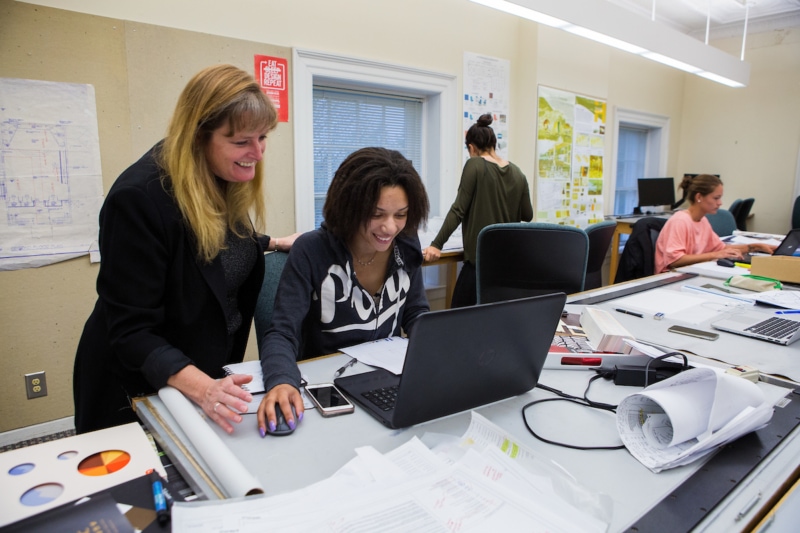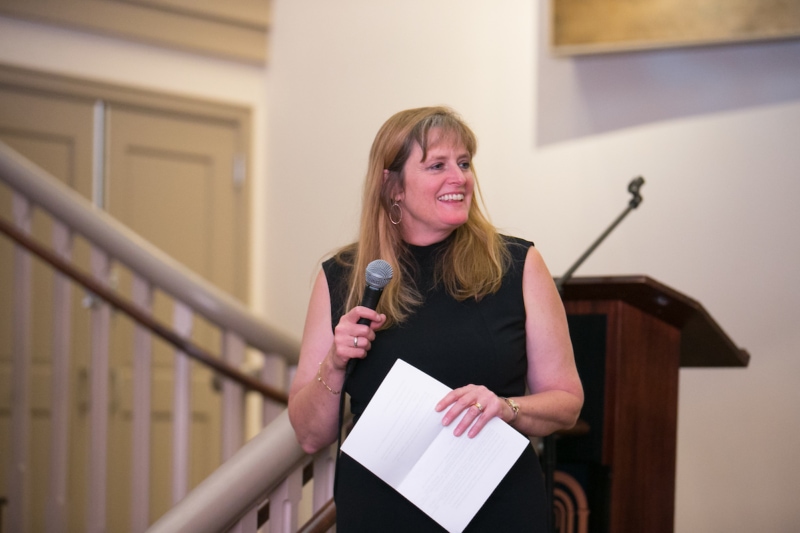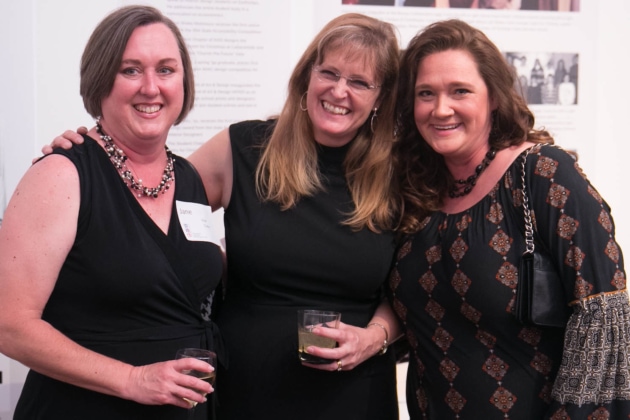Lynn Jones leaves a legacy of design
A 140-year-old institution like Brenau University is, naturally, known for the historic structures that dot its campus, from Walters House and its ornate fireplaces to Pearce Auditorium and its remarkable painted ceiling. What few who walk these halls know is nearly every historic Brenau building has been maintained with the help of one woman and her students over the last 30 years. That woman is Lynn Jones.
Jones, who retired this spring, first came to Brenau in July of 1988, not as a potential employee, but as a potential student. “I was after the evening/weekend program,” she says. “I lived in Atlanta and looked at Georgia State but thought, ‘Evening classes would be much better; let me look at Brenau.’”
She was casually told while inquiring about the MBA program that Brenau had an opening for the interior design chair. Jones said she likely wouldn’t be considered for the job today with her qualifications at the time. She had “a pretty spiffy portfolio” but no master’s degree. Yet after a very successful series of interviews, the job was hers.
“It was just magic,” she says. “It felt like a really good fit right then and there. I came on board and was teaching within three weeks.”

Campus improvements
Jones’ memory of her time at Brenau is almost photographic, from her first office behind the pool – with its 1930s metal desk on a mustard-green, level loop carpet, complete with a sizable hole burned into the floor – to the high-ceilinged office in Simmons Visual Arts Center that she occupied for years.
“We were opening the library at the time I arrived, which had previously been in Simmons,” Jones says. “That was part of the enticement for me. I talked to Jack Burd, president of Brenau at the time, and said that I’d really like to do the design for Simmons Visual Arts Center. So that first year, I worked on the design and pulled in the students. That partnership continued all the way through Dr. Burd’s tenure, and that was a real joy for me.”
This remained a tenet of Jones’ educational model: giving students real-world design experience, access to real clients and the opportunity to see their work completed.
Jones credits Burd for his support both professionally throughout his presidency and personally since his retirement. Burd spent most of his 19 years as president of Brenau sharing a building with Jones.
“I always saw her as delightful,” says Burd. “She was always sincere about interior design like no one I knew. She was marvelous in her chosen part of interior design: in space allocation.”
Even 14 years after his retirement from Brenau, Burd relies on Jones’ design skills. He and his wife, Patricia, moved earlier this year and used Jones to help redesign the entire interior of their new home.
“And she was marvelous,” he says. “There wasn’t a thing she suggested that we didn’t think was superb.”
The relationship between Burd and Jones was an important one, as Burd became a catalyst for structural improvement on the Gainesville campus and was a noted art enthusiast. Gov. Nathan Deal said of Burd in a 2004 tribute in the statehouse, “During Jack Burd’s tenure the campus, located in downtown Gainesville, Georgia, has enlarged to include a new library, a new business and communication arts building, performing arts center, fitness center, tennis center, several student houses and apartment buildings. There has been extensive renovation of buildings listed on the National Register of Historic Places – upgrading 19th-century buildings for 21st-century use.”
Throughout her tenure, Jones – with Burd’s support – worked on the design of Feldmann House, Wheeler House, Walters House, the Trustee Library expansion, the Redwine Technology Center, the Jacobs Building, the original Occupational Therapy Building, the Psychology Center and more.
“She was always professional in support of her staff, and she was very businesslike about it,” Burd recalls. “She knew what it would cost and how long it would take to get it developed, and I just always found her a very, very good faculty member and a very supportive faculty member.
“Of course, anybody who spends 30 years at the same place must really love it.”
CIDA accreditation
Burd and Jack Sites, then-dean of Brenau, gave Jones an early challenge: to get her master’s degree and to get the program accredited. “We were after what was FIDER, or the Foundation for Interior Design Education Research, and is now the Council for Interior Design Accreditation,” she explains. “That was my life for the first four years, and it was hell.”
She and her husband, Philip, moved from Atlanta to Hoschton, a strategic location so she could drive to Athens every morning to work on her graduate degree at the University of Georgia before then driving to Brenau to teach. “Then I would go home, write my papers and do my homework, and my husband would use our word processor and edit and type my papers for me. I’d wake up at 5 a.m., print it out and do it all again.”
This was her life for two years, she says, until she rather fittingly earned her master’s in historic preservation. The concept introduced her to something new at the graduate level and gave her a really gratifying challenge.
Jones ranks Brenau’s CIDA accreditation among her greatest professional accomplishments – along with the initial publication and subsequent editions of her textbook, “Beginnings of Interior Environments.”
She began working as a site visitor for other interior design departments going through the accreditation process in 1998, and three years later she became a team chair. She remained actively engaged in CIDA’s peer review process, conducting 17 accreditation reviews to date.
It was this volunteer work that earned her the national Keith Hooks Volunteer Award from CIDA this year, a prestigious national honor awarded to just one person annually. But Jones didn’t volunteer for credit. “It was such a nice way for me to give back to education,” she says.
Her master’s degree also reinvigorated the Indiana native’s love for the West and an interest in national park design and preservation. She and Philip – who have a home in Montana – have traveled to more than 100 national parks as she studied how the landscape was reflected in the parks’ visitor centers. “To this day, I don’t go to a park without taking pictures of the visitor center and seeing how it reflects the environment.”
And it’s this passion that she is turning to in retirement. She happily and confidently handed the reins over to new Interior Design Department Chair Jill DeMarotta and will spend most of her time now between Georgia, Montana and Indiana, where her father, Verle Fiegle, still lives in her childhood home.
“That really is one of the reasons I’m perhaps retiring a little early,” she says. “I’m looking forward to spending time with him and the rest of the boys in my life.” And by that she means, her husband and two fluffy white Samoyeds.



